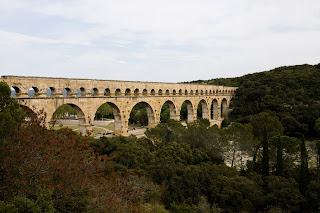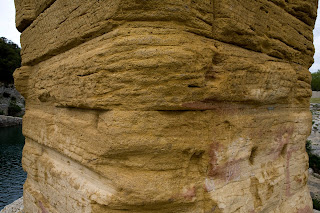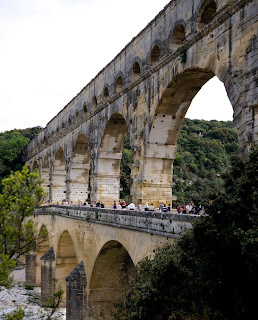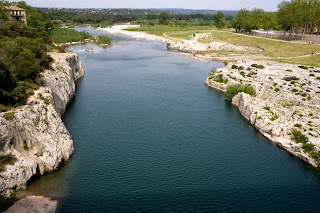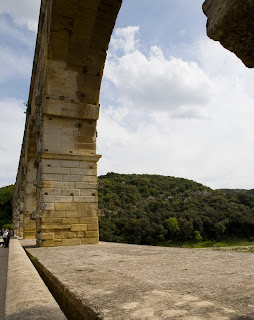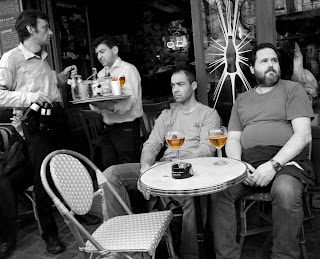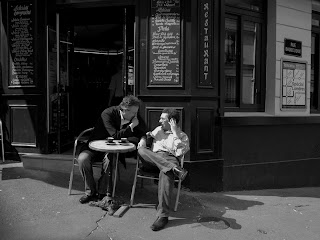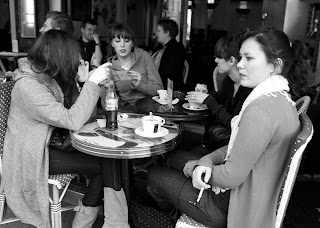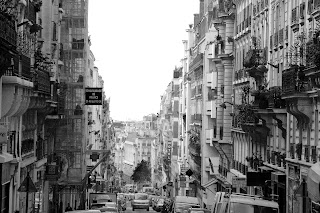There is a constant stream of people climbing the stairs in several of the Tower's four legs. From these stairways, you can see for miles through the protective metal fences. There are places to pause and rest. Some youngsters think the point is to 'win', other folks like to enjoy the internal structure of this enormous steel spiderweb, watch the activities on the ground slowly recede, and contemplate getting a gym membership.

Looking up, past level one, to level two.




The first observation level.

"We're so cool!" Actually, most people were keeping their coats on, but I guess the downside is that they then have difficulty displaying their underwear.

Tourists never get much time to themselves here. There are scores of vendors pushing cheap trinkets on you. These days there are many young men, possibly from India, Sri Lanka or various countries in Africa, going through the throngs independently, yet obviously working in groups for safety. I suspect that many of these men do not have working papers. In the afternoon, I suddenly heard many feet running, looked up and saw these guys scooting away from the Eiffel Tower as fast as they could go. They had spotted policemen who were possibly checking for permits. Judging from the smiles, this scenario is reenacted several times a day. Everybody knows that once the police have moved on, the vendors will once again be flogging the cheapest replicas imaginable of this famous monument.

Tourists are also besieged by women, who I assume are gypsies. They have been a well-known sight in Paris for more than a century. Over the past decades, I have seen them begging in the metro's underground hallways or sitting on streets, sometimes holding very young children who are sound asleep (I was told they are drugged). The ploy right now is for these women to approach tourists and ask "You speak Eeenglish?" If they get your attention--and they always do, they then thrust a well-worn handwritten paragraph in your face, usually telling of a mother needing a serious operation, etc. I learned by accident that if I have a French book title clearly displayed on my lap, these women leave me alone--likely because they do not have the message in French at hand. One friend told me that some gypsies now work for the mafia, but I obviously cannot confirm the report.
I like this picture of the women because it was taken just after they huddled together for their final instructions for the afternoon. The women were laughing, chatting, etc. Suddenly, as they brok up, their laughter stopped and they assumed their theatrical downcast looks of abject pathos and misery, their bodies went from being erect to being slumped, and they spread out, shuffling along, working the crowd, "Excuse, you speak Eeenglish?"

Many tourists visit Paris for only a few hours or a few days, and are invariably exhausted from trying to see 'everything'. I often observe combinations of excitment and exhaustion on people's faces. Those who actually pause to rest are very wise indeed.
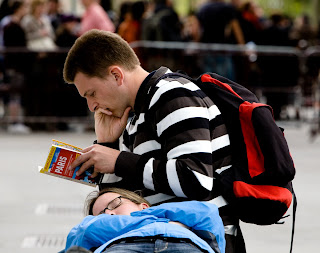
I waited nearly 30 minutes to get this shot. I suddenly realized that a few of the tourist buses had this fascinating advertisement and that, if I positioned myself just so, I could juxtapose the ad with the real thing. I obviously have too much free time.

The Eiffel Tower is one of the world's leading tourist attractions, and possibly the best known symbol of Paris. In my youth, I willingly climbed the stairs to level two. This spring, I spent an afternoon around the tower on April 20th but gave up the plan to ascend the tower after seeing the long lines of people waiting to take one of several elevators or to climb several stairways, and after surmising that even if I climbed the stairs to take pictures, I would always be trying to shoot through the wire fencing which protects climbers (and keeps young guys from scaling the beams). So I stayed on the ground, taking pictures of the structure from below, usually against a rather dark-grey sky, or I watched people from a safe distance with my 200mm lens + 2x converter.
Strong as the tower is, we are not allowed to go to the top level, which is now used solely for broadcasting (and is one reason the tower has been preserved). There have been long discussions about this "temporary" structure, for it was never intended to last more than a few years. By now, however, Paris cannot afford to let it disappear, and that which was once both a marvel and an eyesore, is now inseparable from the capital city.
